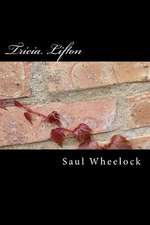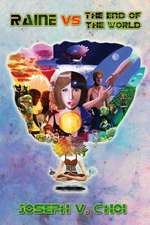The Year 3000: A Dream: Bison Frontiers of Imagination
Autor Paolo Mantegazza Editat de Nicoletta Pireddu Traducere de David Jacobsonen Limba Engleză Paperback – 31 oct 2010
First published in 1897, The Year 3000 is the most daring and original work of fiction by the prominent Italian anthropologist Paolo Mantegazza. A futuristic utopian novel, the book follows two young lovers who, as they travel from Rome to the capital of the United Planetary States to celebrate their “mating union,” encounter the marvels of cultural and scientific advances along the way. Intriguing in itself, The Year 3000 is also remarkable for both its vision of the future (predicting an astonishing array of phenomena from airplanes, artificial intelligence, CAT scans, and credit cards to controversies surrounding divorce, abortion, and euthanasia) and the window it opens on fin de siècle Europe.
Published here for the first time in English, this richly annotated edition features an invaluable introductory essay that interprets the intertextual and intercultural connections within and beyond Mantegazza’s work. For its critical contribution to early science fiction and for its insights into the hopes, fears, and clash of values in the Western world of both Mantegazza’s time and our own, this book belongs among the visionary giants of speculative literature.
Din seria Bison Frontiers of Imagination
-
 Preț: 80.60 lei
Preț: 80.60 lei -
 Preț: 76.07 lei
Preț: 76.07 lei -
 Preț: 68.46 lei
Preț: 68.46 lei -
 Preț: 123.08 lei
Preț: 123.08 lei -
 Preț: 108.85 lei
Preț: 108.85 lei -
 Preț: 120.80 lei
Preț: 120.80 lei -
 Preț: 140.63 lei
Preț: 140.63 lei -
 Preț: 137.95 lei
Preț: 137.95 lei -
 Preț: 110.08 lei
Preț: 110.08 lei -
 Preț: 83.87 lei
Preț: 83.87 lei -
 Preț: 130.29 lei
Preț: 130.29 lei -
 Preț: 132.34 lei
Preț: 132.34 lei -
 Preț: 99.36 lei
Preț: 99.36 lei -
 Preț: 120.80 lei
Preț: 120.80 lei -
 Preț: 94.00 lei
Preț: 94.00 lei -
 Preț: 109.91 lei
Preț: 109.91 lei -
 Preț: 64.49 lei
Preț: 64.49 lei -
 Preț: 103.70 lei
Preț: 103.70 lei -
 Preț: 95.85 lei
Preț: 95.85 lei -
 Preț: 62.06 lei
Preț: 62.06 lei -
 Preț: 99.36 lei
Preț: 99.36 lei -
 Preț: 91.52 lei
Preț: 91.52 lei -
 Preț: 108.22 lei
Preț: 108.22 lei -
 Preț: 90.72 lei
Preț: 90.72 lei -
 Preț: 98.13 lei
Preț: 98.13 lei -
 Preț: 81.42 lei
Preț: 81.42 lei -
 Preț: 112.18 lei
Preț: 112.18 lei -
 Preț: 111.31 lei
Preț: 111.31 lei -
 Preț: 96.50 lei
Preț: 96.50 lei -
 Preț: 91.32 lei
Preț: 91.32 lei -
 Preț: 80.19 lei
Preț: 80.19 lei -
 Preț: 155.48 lei
Preț: 155.48 lei -
 Preț: 90.52 lei
Preț: 90.52 lei -
 Preț: 99.77 lei
Preț: 99.77 lei -
 Preț: 102.88 lei
Preț: 102.88 lei -
 Preț: 96.09 lei
Preț: 96.09 lei -
 Preț: 85.56 lei
Preț: 85.56 lei -
 Preț: 116.28 lei
Preț: 116.28 lei -
 Preț: 87.42 lei
Preț: 87.42 lei -
 Preț: 99.36 lei
Preț: 99.36 lei -
 Preț: 103.70 lei
Preț: 103.70 lei -
 Preț: 81.01 lei
Preț: 81.01 lei -
 Preț: 151.55 lei
Preț: 151.55 lei -
 Preț: 105.56 lei
Preț: 105.56 lei -
 Preț: 82.57 lei
Preț: 82.57 lei -
 Preț: 97.91 lei
Preț: 97.91 lei -
 Preț: 134.41 lei
Preț: 134.41 lei -
 Preț: 128.85 lei
Preț: 128.85 lei
Preț: 107.22 lei
Nou
Puncte Express: 161
Preț estimativ în valută:
20.52€ • 21.34$ • 16.94£
20.52€ • 21.34$ • 16.94£
Carte disponibilă
Livrare economică 24 martie-07 aprilie
Preluare comenzi: 021 569.72.76
Specificații
ISBN-13: 9780803230323
ISBN-10: 080323032X
Pagini: 224
Dimensiuni: 140 x 216 x 15 mm
Greutate: 0.28 kg
Editura: Bison Original
Colecția Bison Books
Seria Bison Frontiers of Imagination
Locul publicării:United States
ISBN-10: 080323032X
Pagini: 224
Dimensiuni: 140 x 216 x 15 mm
Greutate: 0.28 kg
Editura: Bison Original
Colecția Bison Books
Seria Bison Frontiers of Imagination
Locul publicării:United States
Notă biografică
Paolo Mantegazza (1831–1910) was a prominent Italian neurologist, physiologist, anthropologist, defender and correspondent of Darwin, and fiction writer. Nicoletta Pireddu is the director of the comparative literature program and an associate professor of Italian and comparative literature at Georgetown University. She is the editor of Paolo Mantegazza’s Physiology of Love and Other Writings. David Jacobson translated Mantegazza’s Physiology of Love and Other Writings.
Cuprins
Acknowledgments
Introduction: Paolo Mantegazza, Fabulator of the Future
Nicoletta Pireddu
Introduction: Paolo Mantegazza, Fabulator of the Future
Nicoletta Pireddu
1. Paolo and Maria set out for Andropolis. One evening in the Gulf of La Spezia.
2. From La Spezia to the ancient pyramids of Egypt. From the pyramids to the Isle of Experiments. The Land of Equality. Tyrannopolis. Turatia or the Socialist Republic. Logopolis. Other governments and other social organizations.
3. Voyage to the Isle of Dynamo, one of the four great laboratories of planetary force. The Historical Museum of our planet's mechanical evolution. The three great historical epochs. Macstrong's discovery and the pandynamo. The central distribution office of cosmic forces.
4. Departure from Dynamo and arrival in Andropolis. The overall look of the city. Its houses, their construction and architecture. The plazas of Andropolis. The dynamics plant. The market. Arrest of a young thief, and justice meted out.
5. Trip to the Government Palace. Forms of government and political organization around the world in the year 3000. The four wings of the Palace. Land, Health. School. Industry and Commerce. The Office of Finance.
6. The Gymnasium of Andropolis.
7. The Palace of Schools. The primary school. The middle school. The school of advanced studies. Lesson on the influence of passion on the logic of thought.
8. Trip to Hygeia. The statue erected to the preeminent physicians of antiquity. The anteroom of the sick. The divisions of Hygeia. A lung doctor's visit to a tubercular patient. Card money in the year 3000. The Hygeians' department. Visit to newborns. Elimination of a baby. A mother both pitiful and cruel.
9. The city of the dead at Andropolis. Dissolution of corpses. Cremation. The siderophiles and embalmings. Sepulchers. The Pantheon.
10. The Theaters of Andropolis and the Panopticon. A listing of shows in the capital on April 26, 3000. A gala evening at the Panopticon.
11. The Museum of Andropolis. The Arcade and the peripatetics. The natural science wing. Possible humans. Analysis paired with synthesis. The museum wing dedicated to human labor. Concentric circles and centrifugal radii. The blot on the art-history map.
12. The City of God in Andropolis. The Temple of Hope. The church of the Evangelists. The Temple of the Unknown God.
13. Maria's bad mood and Paolo's secret. A session of the Andropolis Academy and the awarding of the cosmic prize. Fertile marriage.
2. From La Spezia to the ancient pyramids of Egypt. From the pyramids to the Isle of Experiments. The Land of Equality. Tyrannopolis. Turatia or the Socialist Republic. Logopolis. Other governments and other social organizations.
3. Voyage to the Isle of Dynamo, one of the four great laboratories of planetary force. The Historical Museum of our planet's mechanical evolution. The three great historical epochs. Macstrong's discovery and the pandynamo. The central distribution office of cosmic forces.
4. Departure from Dynamo and arrival in Andropolis. The overall look of the city. Its houses, their construction and architecture. The plazas of Andropolis. The dynamics plant. The market. Arrest of a young thief, and justice meted out.
5. Trip to the Government Palace. Forms of government and political organization around the world in the year 3000. The four wings of the Palace. Land, Health. School. Industry and Commerce. The Office of Finance.
6. The Gymnasium of Andropolis.
7. The Palace of Schools. The primary school. The middle school. The school of advanced studies. Lesson on the influence of passion on the logic of thought.
8. Trip to Hygeia. The statue erected to the preeminent physicians of antiquity. The anteroom of the sick. The divisions of Hygeia. A lung doctor's visit to a tubercular patient. Card money in the year 3000. The Hygeians' department. Visit to newborns. Elimination of a baby. A mother both pitiful and cruel.
9. The city of the dead at Andropolis. Dissolution of corpses. Cremation. The siderophiles and embalmings. Sepulchers. The Pantheon.
10. The Theaters of Andropolis and the Panopticon. A listing of shows in the capital on April 26, 3000. A gala evening at the Panopticon.
11. The Museum of Andropolis. The Arcade and the peripatetics. The natural science wing. Possible humans. Analysis paired with synthesis. The museum wing dedicated to human labor. Concentric circles and centrifugal radii. The blot on the art-history map.
12. The City of God in Andropolis. The Temple of Hope. The church of the Evangelists. The Temple of the Unknown God.
13. Maria's bad mood and Paolo's secret. A session of the Andropolis Academy and the awarding of the cosmic prize. Fertile marriage.
Editor's Notes on the Text
Recenzii
“Two welcome surprises await readers of this book: the first is simply that a nineteenth-century masterpiece of utopian literature has been made available to them in a translation that reads like an original, and the second, that a great scholar has written a user-friendly, highly sophisticated, and passionate introduction shedding light on the times of neo-positivism, its antecedents, and its legacy.”—Luigi Ballerini, professor of Italian, University of California at Los Angeles
"Thanks to the extensive introduction, The Year 3000: A Dream will appeal to anyone interested in the literary evolution of science fiction or the early contributions to the genre of one very talented and foresighted Italian fiction writer."—Alan J. Couture, ForeWord
"The Year 3000 is indeed an alternative universe where the world is a better place for all and true love is the most powerful force in the universe. Enjoy the trip."—Patricia Contino, Newpages.com
"The Year 3000. A Dream constitutes an important addition to the relatively small number of nineteenth-century Italian novels available in English and is an invaluable text to add to any class, whether within a comparative context or not, teaching nineteenth-century Italian literature."—Gabriella Romani, Annali d'italianistica



















